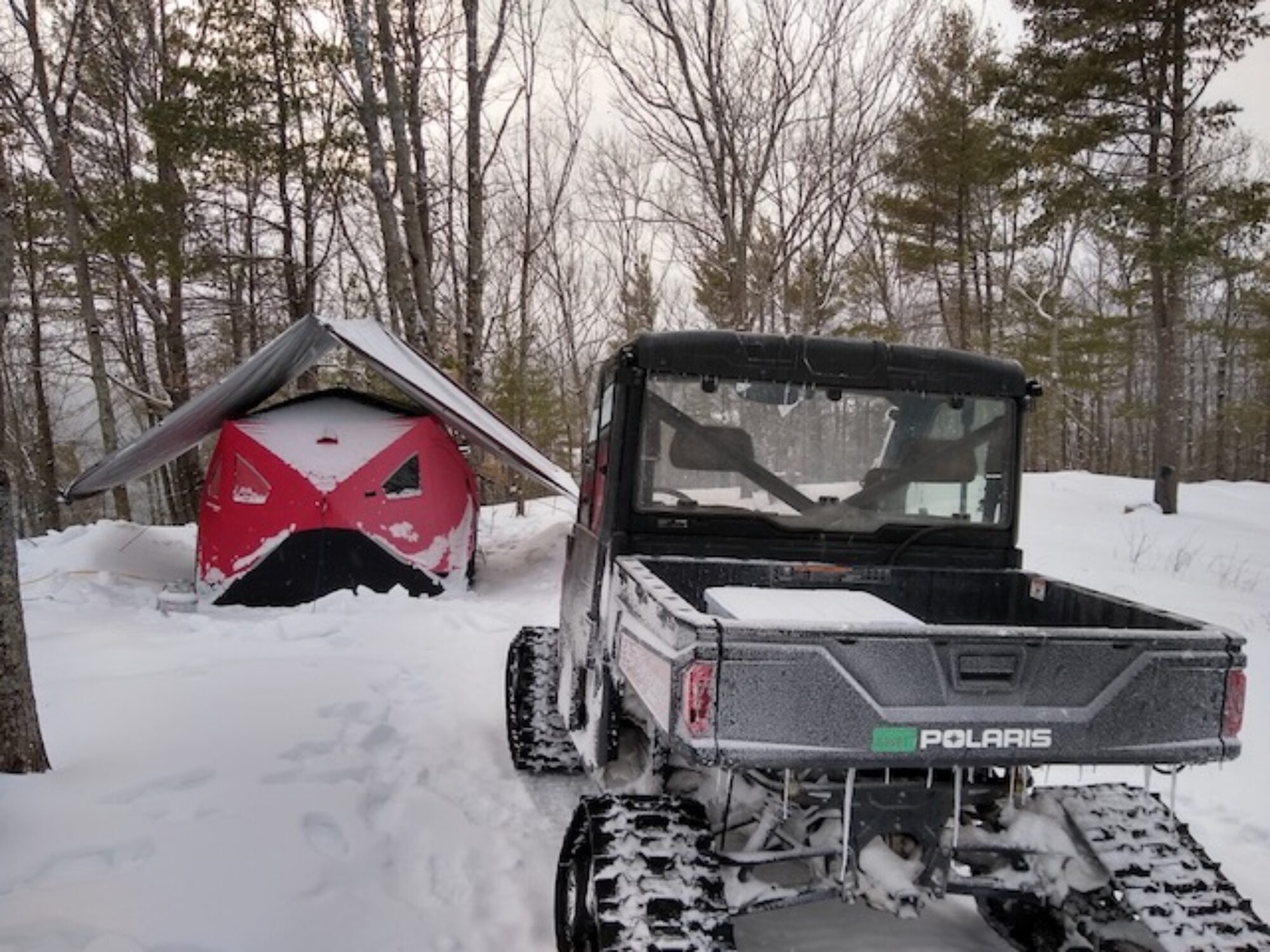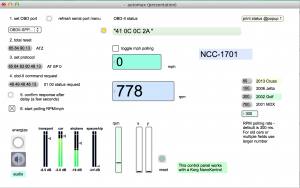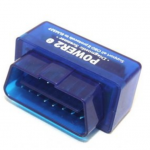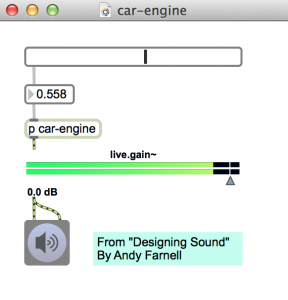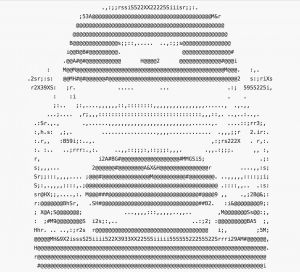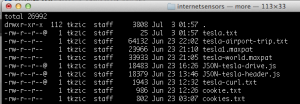An update of the automax project
This is a Max patch that generates engine sounds (car, airplane, and spaceship) by reading RPM data from a bluetooth OBD-II sensor in an automobile. It uses Max adaptations of Pd patches by Andy Farnell from “Designing Sound”. And a Fourier filter patch (spaceship) by Katja Vetter.
In this audio clip, an airplane engine sound is mixed with a car engine sound.
The Max patch has been updated to detect available bluetooth devices. The audio example above was done with this device (Bluetooth Supper Mini OBD 2/OBD II ELM 327 Power 2)
http://www.amazon.com/gp/product/B009NP5RPQ
But any Elm 327 device should work, as long as it will connect with your computer.
The device pictured above needs to be deleted and re-paired each time you use it (code: 1234). I would recommend looking for something else.
Download
https://github.com/tkzic/automax
Files
Main patch
automax.maxpat
Abstractions and other files
- engine-overtone.maxpat
- fourierfilter.maxpat
- hextoint.maxpat
- vz.nanoctrlr-tz.maxpat
- max-pd-abstractions folder (needs to be in Max file path or a subdirectory)
Instructions
Follow the sequence of events as directed in the patch. Starting by selecting your device from the menu in the upper left corner. If there is a problem with the serial connection you will get “read 0” messages – or an error in the Max window.
Set the polling rate as slow as possible (700 ms.) and then work backwards.
The Korg NanoKontroller works with this patch too.
